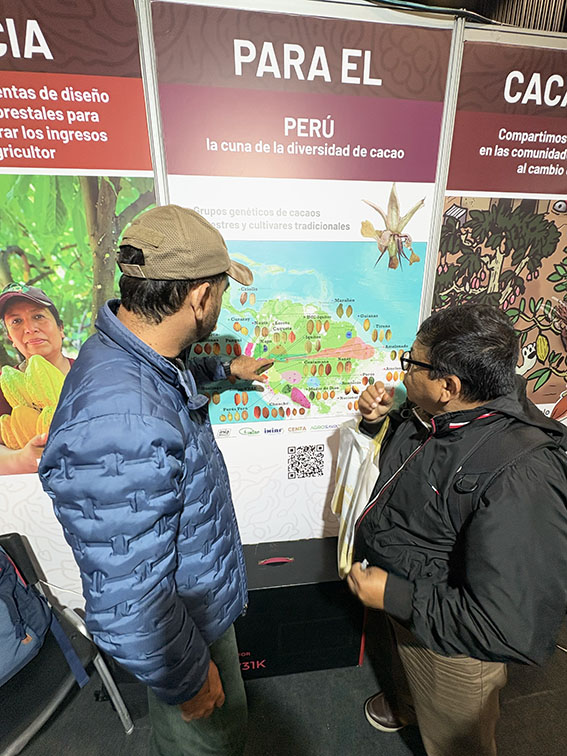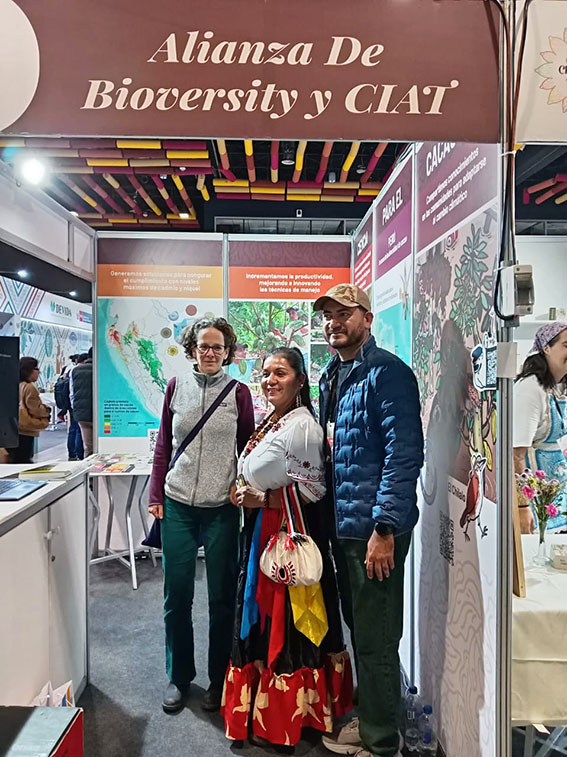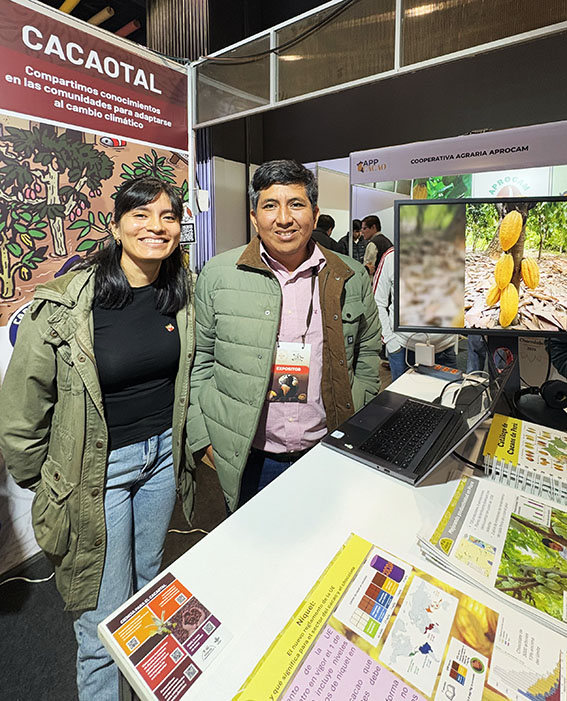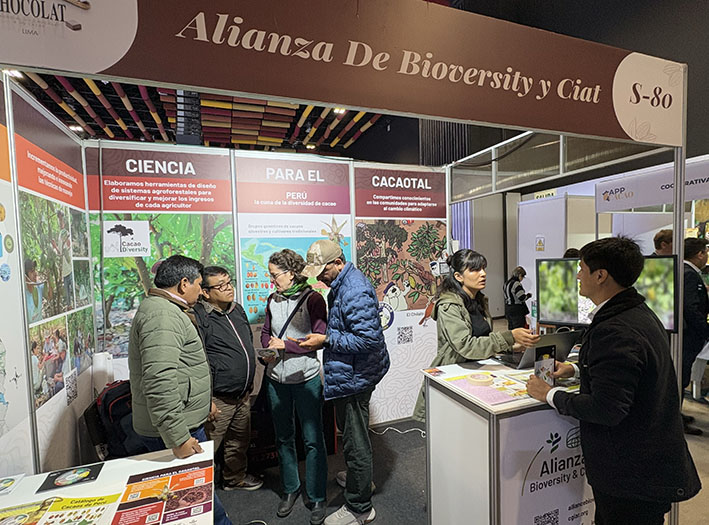The 16th International Cocoa and Chocolate Show, held in Lima, Peru, established itself this year as the most important meeting point for producers, exporters, researchers, and lovers of Peruvian cocoa. At the event, organized by various private and public entities that promote Peruvian cocoa, the Clima-LoCa research project played a prominent role, sharing advances and strategies that contribute to the sustainable development of the cocoa sector in the Andean country.

Alan Farfán from the Clima-LoCa research team provides further details on the genetic map of cocoa that has been developed. Photo: Carmen Calle – Alliance of Bioversity and CIAT.
Science applied to cocoa genetics and productivity
The technical and research team from the Alliance of Bioversity International and CIAT—a leading agricultural research organization and key partner in the Clima-LoCa project—presented findings on the genetics of Peruvian cocoa. The research led by this group has identified varieties with high climate resilience, a crucial factor in addressing the challenges posed by climate change and protecting national production from emerging pests or diseases.
In addition, the specialists explained the use of cutting-edge technology aimed at improving productivity and traceability throughout the cocoa chain. These technological innovations are essential to provide greater guarantees to international markets, but also to offer producers better tools to identify, monitor, and strengthen their crops.

Rachel Atkinson, focal point and senior researcher, along with Abel Farfán and a producer partner from the Piura region. Photo: Alliance of Bioversity and CIAT.
Digital tools and diversification for producers
Among the tools presented, Cacao Diversity stood out, a platform that facilitates the design of diversified agroforestry systems. Through the use of genetic and ecological data, this solution allows producers to optimize their plots, increase biodiversity, and, consequently, access new sources of income.
The commitment to agroforestry systems encourages agricultural sustainability, as it promotes integrated landscape management and contributes to climate change adaptation and mitigation. In addition, diversification reduces economic risks for farming families by incorporating different plant species and improving the health of the local ecosystem.

Alida Ramos and Fredy Yovera, leaders of the field trials and application of XRF technology, provided information on Clima-LoCa at the Alliance of Bioversity International and CIAT. Photo: Carmen Calle – Alliance Bioversity & CIAT.
Innovative communication on climate change
The Clima-LoCa project also shared its outreach strategy aimed at raising awareness of the impacts of climate change on farming communities, especially in the Piura region. Using characters such as Capitán Polo and El Chilalo—the latter an emblematic bird for farmers in the area—the campaign succeeded in conveying key messages in a playful and culturally relevant way.
The initiative recognizes that for science to have an impact, it must be translated into concrete actions adapted to the realities of the territories and the actors involved.
A hall full of opportunities
The fair reaffirms itself as a crucial event for the exchange of knowledge and the strengthening of alliances among those who are committed to high-quality, sustainable, and competitive Peruvian cocoa. Clima-LoCa’s participation in the International Cocoa and Chocolate Fair is an inspiring example of the value of applied research and international collaboration for the well-being of producers and the protection of Peru’s natural resources.
Let’s continue to support and consume Peruvian cocoa, a national treasure that conquers palates and generates development opportunities in the country!

